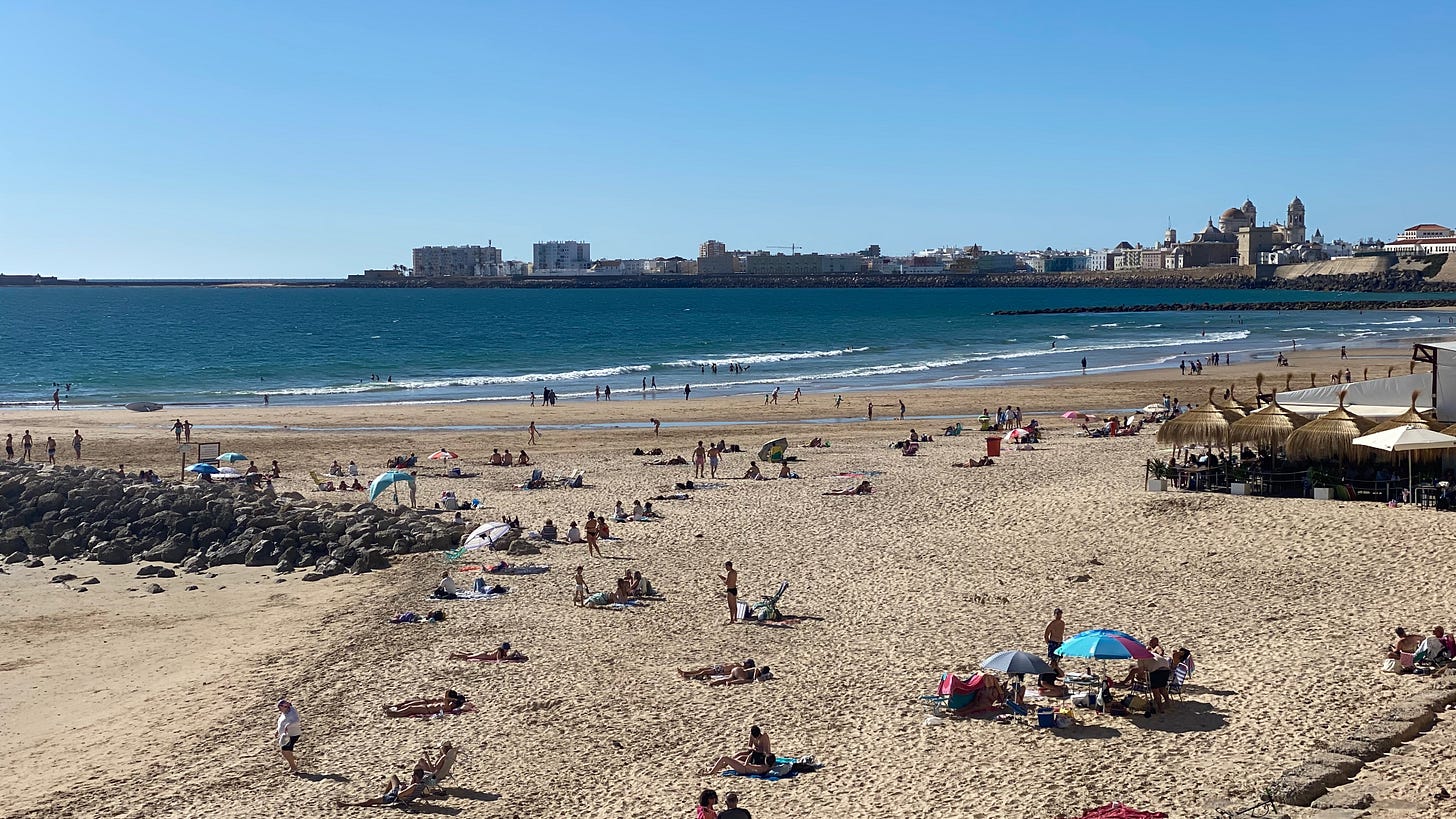Postcards from Spain
My Andalusian adventure has taken me to Sevilla, Càdiz, Setenil de las Bodegas, Màlaga and Granada. Come along for the ride!
After landing in Spain just in time for the Día del Trabajador (Labour Day) holiday, I’ve been given a crash course introduction to the rich history and culture of the Andalusian region.
My starting point in Sevilla was a little overwhelming. The city offers a wealth of sites to visit and its popularity means that many of them were packed, especially during a holiday week. Since my Spanish excursion was a little last-minute, I hadn’t reserved tickets for any of the busier sites and had to be content with a walking tour that let me see them from the outside (and the long lines of people waiting to get in). To be honest, tho, after eight months in Europe, I’ve gotten a little tired of admiring cathedrals from outside or inside.


I instead decided to enjoy a few unguided walking tours of my own and try some of the local restaurants. My La Banda hostel was also great for making social connections at the communal breakfasts and nightly suppers at the rooftop bar. As usual, I raised the average age a few decades as most of the guests were backpacking students, but they were generally unperturbed by and even a little curious about the sixty-something solo traveller in their midst.
We of course sat around complaining about all the tourists, all too aware on the cognitive dissonance required for this activity. Nevertheless, I decided to hit the road after just three days in Seville, taking the advice of several guests and hotel staff to head to one of Europe’s oldest continuously inhabited cities, Càdiz, the Atlantic Ocean port from which Christopher Columbus launched two of his voyages of conquest.
Càdiz is a bustling city that is virtually an island but is small enough that you could probably walk around the entire place in a day. I didn’t try, but I did do a lot of walking (and climbing) to reach the top of Càdiz’s two highest observation towers, so essential to a town that has relied on shipping for its wealth for three-thousand years.
Yes, 3,000. Makes Montréal, at 381 years, seem like a newborn.
From Càdiz, I travelled to Málaga, another busy Spanish port town, but on the opposite side of the straight of Gibraltar, on the Mediterranean Sea. The route took me through rolling hills in the north of the Parque Natural Sierra de Grazalema, with a stopover in Setenil de las Bodegas, a so-called “pueblo blanco,” where villagers had literally carved their white-washed homes into the surrounding cliffs.
If you’re wondering why I am speeding so quickly through these descriptions, it’s because between touring and driving, I haven’t had a lot of time to sit down and chronicle my many adventures. I have just arrived in another of the continent’s oldest cities, Granada, which one of my Spanish acquaintance described to me as “the most beautiful town in Spain.”
Now you can’t expect me to sit around in my hostel writing a full travel column on a beautiful May day in “the most beautiful town in Spain,” now can you?

So I’ve posted a few pictures as a tease and I’ll be back to you in a few days with a fuller description of life on the road in wonderful Andalusia.
Thanks for riding along with me.








